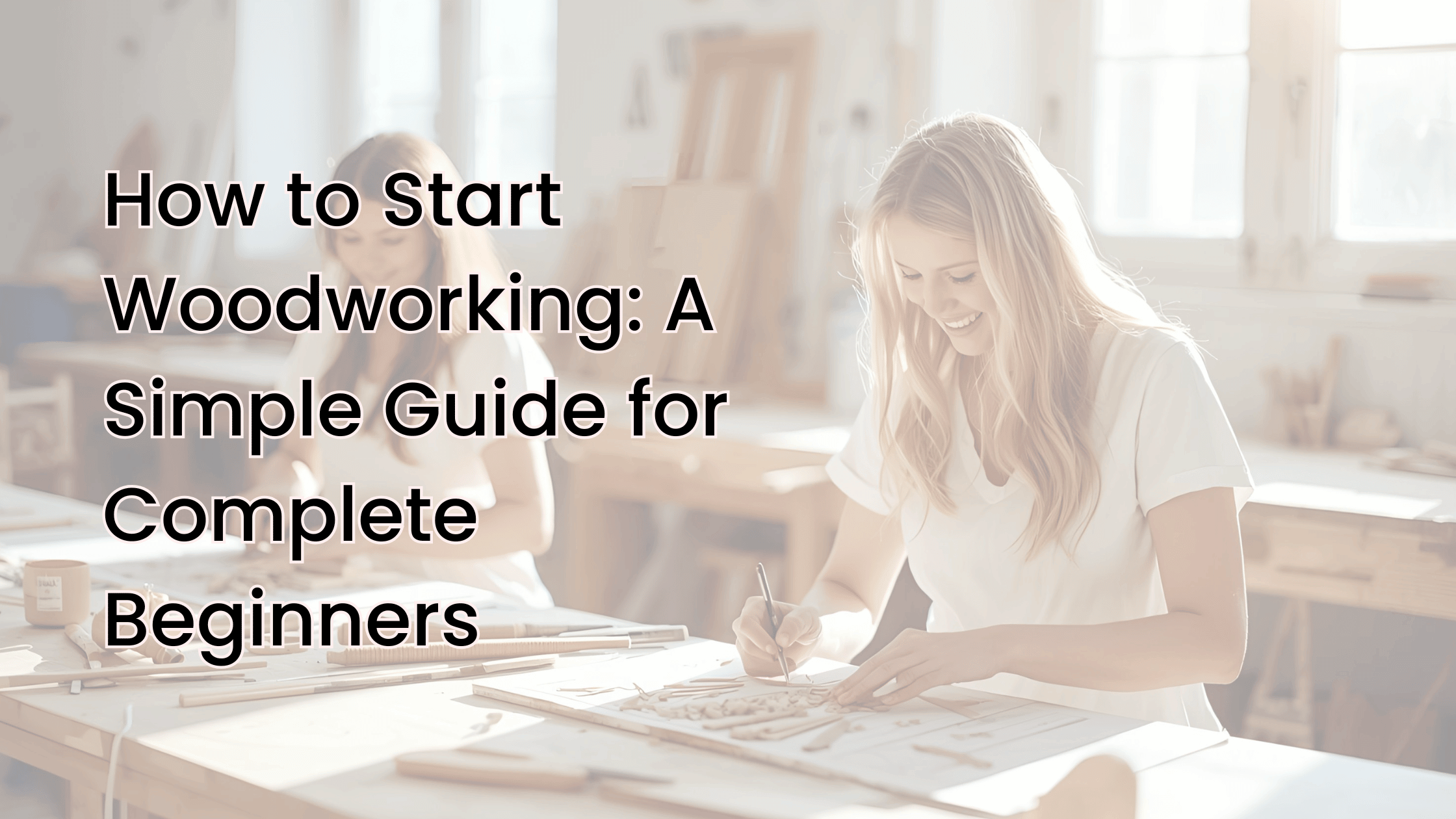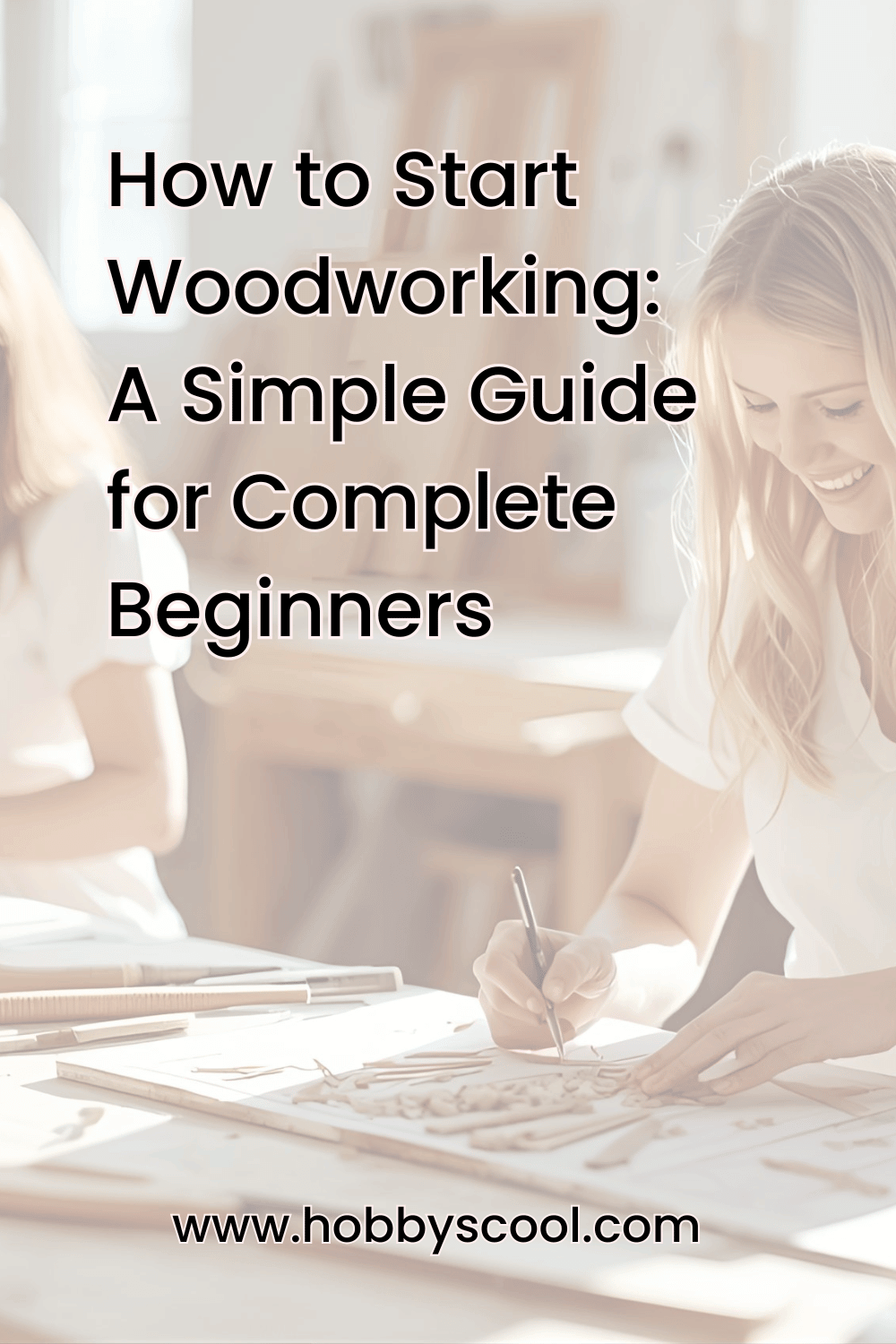How to Start Woodworking: A Simple Guide for Complete Beginners
If you’ve ever watched a woodworking video and thought, “That looks amazing—but I could never do that,” you’re not alone.
For a lot of us, woodworking feels like one of those “someday” skills—something we’ll try after we’ve built a garage workshop, bought a dozen fancy tools, and somehow learned how to use them all without losing a finger.
But here’s the truth: you don’t need an entire tool wall or a professional setup to start building beautiful, functional projects. You just need curiosity, a couple of affordable tools, and the confidence to try.
Inside the Craft & Create Club, we’re breaking woodworking down into simple, beginner-friendly steps that anyone can do—no experience (or intimidation) required.
Let’s start small and make woodworking feel fun again.
Why Woodworking Is Easier (and More Rewarding) Than You Think
Woodworking is more than sawdust and screws—it’s creative therapy for your hands.
It’s the joy of turning a simple board into something useful, the satisfaction of sanding smooth edges, and the calm that comes from seeing your idea take shape.
That’s what we focus on inside the Craft & Create Club: helping you explore creativity without pressure or perfectionism. You’ll find members who’ve never held a drill before, working side-by-side (virtually) with crafters who are rediscovering the joy of making things after years away from the workshop.
When I asked Marc Thoma of Pacific Coast Woodcrafts (guest on Episode #2 of the HobbyScool Podcast) what he loves most about woodworking, he said it perfectly:
“Start small. Every project teaches you something new—and before you know it, you’re building with confidence.”
So let’s start small, too.
The Tools You Actually Need (and What to Skip)
Step one for most beginners is figuring out what to buy—and what not to.
Scroll through any woodworking video and you’ll see a tool lineup that looks like the aisle of a hardware store. But for your first few projects, you really only need two essential tools, plus a couple of optional ones once you’re comfortable.
Inside our Woodworking Tools for Beginners workshop in the Craft & Create Club, we keep things simple:
Your first must-have tool: a drill/driver. It does most of the work—drilling holes, driving screws, even sanding or buffing with the right attachments.
Your second essential: a good beginner saw. A small circular saw or jigsaw is perfect for early projects. You’ll learn how to use it safely and how to make straight, clean cuts without needing a full saw table.
A helpful bonus tool: a random-orbit sander. It smooths rough edges in seconds and makes projects look polished with minimal effort.
Safety gear: goggles and ear protection—think of them as confidence boosters, not chores.
We also cover which tools can wait until later. You don’t need a full workshop. You can build plenty of beginner projects on a patio table or garage corner.
Marc recommends looking for tools second-hand on Facebook Marketplace or local buy-and-sell groups:
“A lot of people upgrade or downsize their workshops, and you can find high-quality tools for half the price.”
It’s not about having every tool—it’s about knowing how to use the few you have well.
Conquer the Drill: Your Confidence Builder
Here’s a confession: most of us use our drills wrong.
If you’ve ever stripped a screw, split a board, or watched your bit spin uselessly in mid-air—you’re in good company. The good news? Once you understand what those mysterious numbers and symbols on your drill mean, everything clicks.
In our “3 Drill Settings You’re (Probably) Using Wrong—And How to Fix Them” workshop, we break it down step-by-step:
The numbers: those control torque, or how much twisting power your drill uses. Lower numbers = gentle for delicate materials. Higher numbers = strong for tougher jobs.
Drill vs. screw mode: one spins freely to drill holes; the other stops automatically when the screw is set.
Speed settings: slow for control, fast for drilling into wood or metal.
Once you know these basics, you’ll stop over-tightening, stop cracking wood, and start getting clean, confident results every time.
And because this workshop is designed for absolute beginners, we show each setting in action—no jargon, just simple visual steps you can follow while you practice.
You’ll leave knowing exactly which settings to use for your next project (plus you’ll get a printable cheat sheet to keep nearby).
Beginner Wisdom from a Pro
When I sat down with Marc Thoma on HobbyScool podcast, he shared some of the most grounded, practical advice I’ve ever heard for getting started.
Marc didn’t begin with a fancy shop. He started in his garage, building raised garden beds and small furniture pieces with just a handful of tools. Over time, his weekend hobby turned into Pacific Coast Woodcrafts, where he now teaches and inspires others to do the same.
Here are a few of Marc’s top tips from our conversation:
Start small. Pick projects that match your current skill level—like a cutting board, planter box, or simple shelf.
Buy tools slowly. Focus on quality over quantity.
Don’t chase perfection. Even professional woodworkers see tiny flaws in their work.
Prioritize safety and comfort. Good lighting, proper eye protection, and steady footing go a long way.
Have fun and take breaks. Most mistakes (and injuries) happen when you’re tired or rushing.
He also reminded me that every project is a teacher. The first version might wobble, but the second one will be sturdier—and the third will make you proud.
🎧 Listen to the full episode: Beginner Woodworking Tips with Marc Thoma
(You can find it on the HobbyScool Podcast feed or your favorite listening app.)
Your First Project Idea
Still wondering where to start? Try something that gives you a win right away.
Marc’s favorite beginner project—and mine—is a wooden cutting board.
It’s small, practical, and teaches all the basics: measuring, cutting, sanding, and finishing. Plus, you can complete it with minimal tools and workspace.
Once you’ve made one, try a matching set or gift them for the holidays. You can even personalize them with woodburning or paint.
Other easy starter ideas include a small floating shelf, a planter box, or a photo display stand. All of these use basic cuts and joints you’ll learn in the Club workshops.
Remember: the goal isn’t to build a perfect piece—it’s to build your confidence.
Why This Matters (Even If You Never Plan to “Become a Woodworker”)
What I love most about watching our members discover woodworking is how quickly it turns from “I can’t” into “I did.”
Building something tangible—something you can hold, use, and show off—creates a sense of accomplishment that no scrolling session can replace.
Woodworking teaches patience, problem-solving, and a quiet kind of creativity that sneaks up on you. It’s not about being the next master carpenter—it’s about enjoying the process, finding calm in repetition, and learning to trust yourself with something new.
Even if your first project has uneven edges, you’ll look at it and think, I made that.
And that’s the real win.
Take the Next Step
If this sparked your curiosity, your next step is easy:
👉 Join the Craft & Create Club.
Inside, you’ll find both of these workshops ready to watch:
Woodworking Tools for Beginners
3 Drill Settings You’re (Probably) Using Wrong — And How to Fix Them
Each session includes short videos, printable guides, and a welcoming community of makers cheering you on. You’ll also get access to every past workshop in our creative library—so whether you’re into wood, fabric, paint, or paper, there’s something waiting for you.
And don’t forget to listen to the Beginner Woodworking Tips episode with Marc Thoma for even more guidance and encouragement.
Start with one board, one drill, and a little curiosity.
You’ll be surprised by what you can create.
Until next time, keep finding magic in the everyday.



